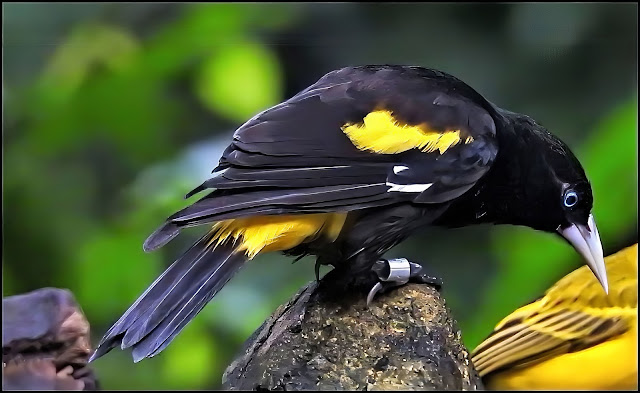The Indian peafowl is a resident breeder across the Indian subcontinent and inhabits the drier lowland areas of Sri Lanka. In the Indian subcontinent, it is found mainly below an elevation of 1,800 m (5,900 ft) and in rare cases seen at about 2,000 m (6,600 ft). It is found in moist and dry-deciduous forests, but can adapt to live in cultivated regions and around human habitations and is usually found where water is available. In many parts of northern India, they are protected by religious practices and will forage around villages and towns for scraps. Some have suggested that the peacock was introduced into Europe by Alexander the Great, while others say the bird had reached Athens by 450 BCE and may have been introduced even earlier. It has since been introduced in many other parts of the world and has become feral in some areas.

The Indian peafowl has been introduced to the United States, the United Kingdom, United Arab Emirates, France, Mexico, Honduras, Costa Rica, Colombia, Guyana, Suriname, Brazil, Uruguay, Argentina, South Africa, Spain, Portugal, Greece, Italy, Madagascar, Mauritius, Réunion, Indonesia, Papua New Guinea, Australia, New Zealand, Croatia and the island of Lokrum.

Peafowl are best known for the male's extravagant display feathers which, despite actually growing from their back, are thought of as a tail. The "train" is in reality made up of the enormously elongated upper tail coverts. The tail itself is brown and short as in the peahen. The colours result not from any green or blue pigments but from the micro-structure of the feathers and the resulting optical phenomena. The long train feathers (and tarsal spurs) of the male develop only after the second year of life. Fully developed trains are found in birds older than four years. In northern India, these begin to develop each February and are moulted at the end of August. The moult of the flight feathers may be spread out across the year.
Peafowl forage on the ground in small groups, known as musters, that usually have a cock and 3 to 5 hens. After the breeding season, the flocks tend to be made up only of females and young. They are found in the open early in the mornings and tend to stay in cover during the heat of the day. They are fond of dust-bathing and at dusk, groups walk in single file to a favourite waterhole to drink. When disturbed, they usually escape by running and rarely take to flight.

Peafowl produce loud calls especially in the breeding season. They may call at night when alarmed and neighbouring birds may call in a relay like series. Nearly seven different call variants have been identified in the peacocks apart from six alarm calls that are commonly produced by both sexes.
Peafowl roost in groups during the night on tall trees but may sometimes make use of rocks, buildings or pylons. In the Gir forest, they chose tall trees in steep river banks. Birds arrive at dusk and call frequently before taking their position on the roost trees. Due to this habit of congregating at the roost, many population studies are made at these sites. The population structure is not well understood. In a study in northern India (Jodhpur), the number of males was 170–210 for 100 females but a study involving evening counts at the roost site in southern India (Injar) suggested a ratio of 47 males for 100 females.
Peafowl are omnivorous and eat seeds, insects (including termites), worms, fruits, small mammals, frogs, and reptiles (such as lizards). They feed on small snakes but keep their distance from larger ones. In the Gir forest of Gujarat, a large percentage of their food is made up of the fallen berries of Zizyphus. They also feed on tree and flower buds, petals, grain, and grass and bamboo shoots. Around cultivated areas, peafowl feed on a wide range of crops such as groundnut, tomato, paddy, chili and even bananas. Around human habitations, they feed on a variety of food scraps and even human excreta. In the countryside, it is particularly partial to crops and garden plants.
%20(Lophura%20nycthemera)%2011.jpg)
%20(Lophura%20nycthemera)%2010.jpg)
%2010.jpg)
%2011.jpg)
%2012.jpg)

%2010.jpg)
%2010.jpg)



%2010.jpg)
%2010.jpg)





%2030.jpg)






%2010.jpg)
%2012.jpg)
%2011.jpg)
%2010.jpg)




%2010.jpg)





%2010.jpg)
%2011.jpg)
%2012.jpg)



%20(Anas%20platyrhynchos)%2020.jpg)